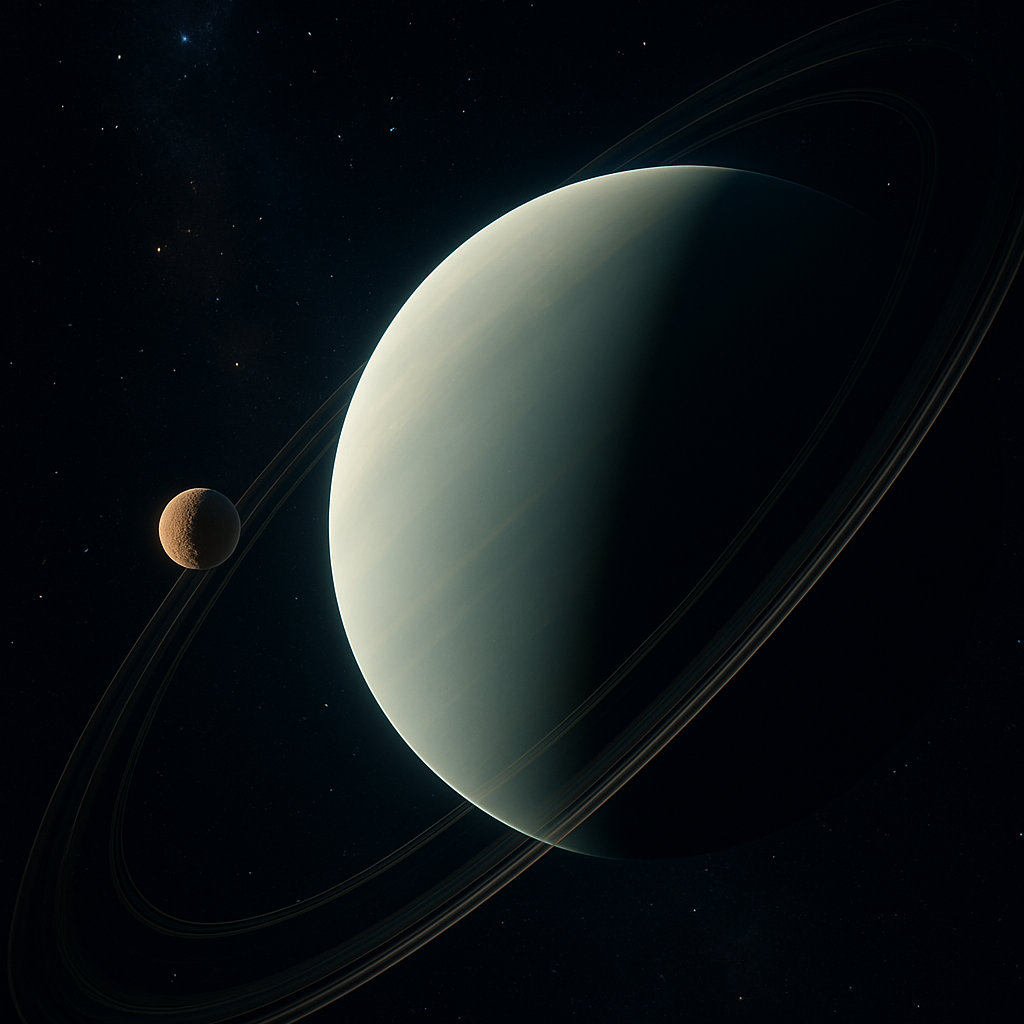NASA’s JWST Discovers New Moon Orbiting Uranus: A Game-Changer for Our Solar System!
The James Webb Space Telescope has made an astonishing discovery of a tiny moon orbiting Uranus, potentially reshaping our understanding of the icy giant’s complex system.
A Groundbreaking Discovery by the James Webb Space Telescope
NASA’s recent announcement about the James Webb Space Telescope (JWST) has caused excitement among astronomers and space enthusiasts alike. The powerful observatory has detected a new moon orbiting the planet Uranus. This small celestial body, which is only six miles wide, was found between the well-known moons Ophelia and Bianca. This revelation could significantly alter our understanding of Uranus and its system of moons.
The JWST, with its advanced technology, is capable of providing unprecedented insights into distant celestial objects. Since its launch, the telescope has been pivotal in enhancing our comprehension of the outer solar system. Its latest discovery continues to demonstrate the instrument’s formidable capabilities and the potential for more cosmic discoveries.
Understanding the Moons of Uranus
Uranus, the seventh planet from the sun, has an intricate system of moons and rings. Most of its 27 known moons are named after characters from the works of William Shakespeare and Alexander Pope. The newly discovered moon adds another layer of intrigue to Uranus’ dynamic celestial family. Its unique position between Ophelia and Bianca suggests there may be more to learn about gravitational interactions and orbital dynamics around the icy giant.
- Ophelia and Bianca, as part of Uranus’ inner moons, are pivotal to understanding the planet’s rings.
- The discovery of a new moon offers a fresh perspective on these interactions.
- Understanding these dynamics could provide clues about the planet’s formation and evolution.
The Vast Potential of JWST’s Capabilities
Many sources suggest that the James Webb Space Telescope’s cutting-edge technology marks a new era in space exploration. Its ability to peer into the depths of the universe is not just limited to discovering moons. Astronomers expect the JWST to unveil many of the universe’s secrets, from observing distant galaxies to understanding the earliest stars.
JWST’s instruments are designed to collect data in the infrared spectrum. This allows it to see through cosmic dust clouds effectively, providing clearer images of celestial phenomena than ever before. The discovery of a new moon orbiting Uranus exemplifies how this powerful tool can redefine our understanding of the cosmos.
Future Implications and What Lies Ahead
The discovery of this small moon is just the beginning. As the James Webb Space Telescope continues its observations, it is likely to reveal many more astronomical surprises. Each discovery not only enhances our comprehension of our solar system but also builds a more expansive picture of the universe and how it functions.
Stay engaged with the wonders of space exploration as projects like the JWST uncover the mysteries of the universe. Whether you’re a seasoned astronomer or just someone longing to know more about the cosmos, these discoveries inspire incredible curiosity and wonder. Stay tuned for the next big revelation!
If you’re excited about the discoveries made by the James Webb Space Telescope, continue to follow its journey. Keep connecting with reputable sources for more updates on the ever-unfolding story of our universe.

Leave a Reply